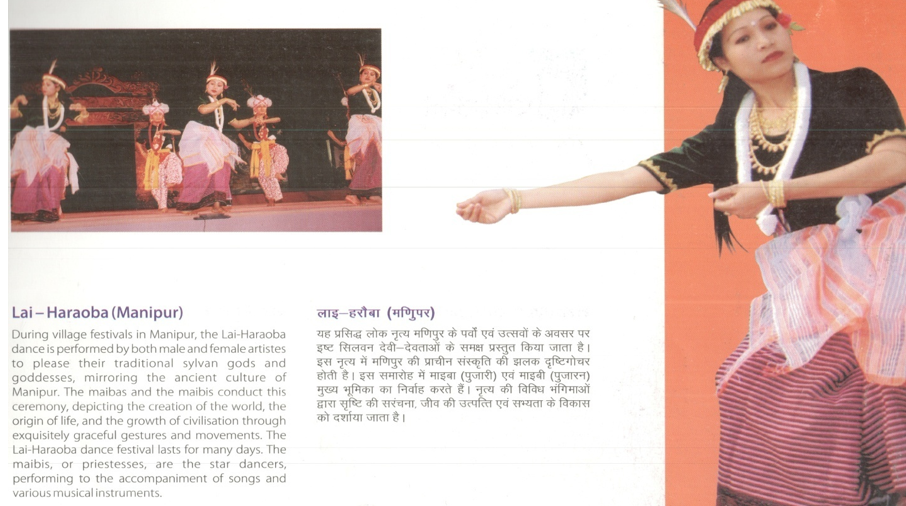|
LAI-HARABA DANCE MANIPUR |
|
 |
|
|
|
|
DHOL CHOLAM MANIPUR |
|

|
|
|
The kings of Manipur encouraged the martial arts, because of which evolved a variety of combat exercises, which later lent themselves to dancing. One of the most thrilling of the dances is the Thang-ta, performed by young men with sword and shield. The drum, by itself, enjoys a privilege in the dances of Manipur. There are several kinds of drums, each intended for a particular occasion. The festival of Holi, in spring, is the real time for drum dances, such as Dhol Cholom. Besides the ritual and harvest dances, there are the simple recreational dances which capture movements of animals and birds and everyday functions. The tribes of Arunachal Pradesh nourish dances, dance dramas, pantomimes and operas based on Buddhist stories and legends. There are organised parties of performers, as well as facilities for training. The dancers themselves make the masks, representing demons and animals connected with Buddhist lore, and the gorgeous costumes. Performances take place mostly in monasteries during festivals. The dances of Sikkim have little relationship with Indian traditions except in the cases of mask dances which have the same format as the Buddhist dances still practised. The women here have their independent folk dances but the men by and large are attracted only to the monastic versions. |
|
